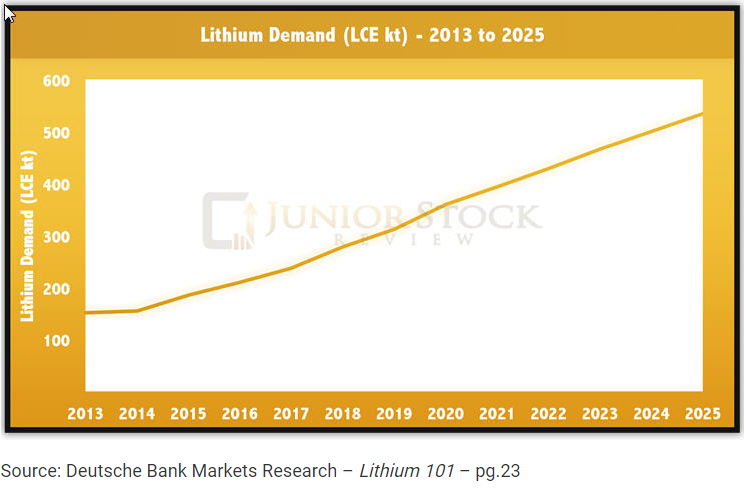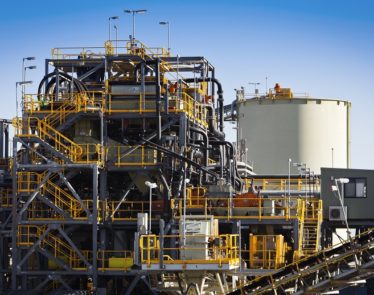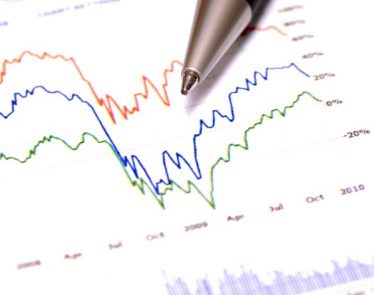There is one thing most people can agree on, the electric vehicle revolution is happening faster than anyone expected. That includes the car and lithium-ion battery manufacturers, along with the companies that mine the raw materials required to fuel them. According to Bloomberg New Energy Finance, today’s global production of lithium-ion batteries is only enough to supply 900,000 to 1 million electric vehicles, less than 1% of the 530 million plug-in cars forecasted to be on the road by 2040. In fact, BNEF expects electric vehicle sales to outsell internal combustion engine models by 2038, when one-third of the total number of cars on the road worldwide will be fueled by lithium-ion batteries.
Two critical factors driving what many believe is the end of the internal combustion engine’s almost 150 year dominance of the automotive industry are, the rapid decline in the cost of lithium-ion batteries, and the need to rapidly increase production of the raw materials required to build them.
Auto companies like Tesla, General Motors, Volkswagen and Volvo are all ramping-up global electric vehicle production and planning a roster of new models that will be more affordable and with longer driving ranges than earlier versions. And, it’s not just the car manufacturers that are getting in on the business. Apple, the largest information technology company in the world, is rumored to be working with China’s biggest automotive battery maker CATL, on an electric vehicle battery project. Furthermore, officials in countries including the U.S., United Kingdom, France, India and Norway have all set aggressive targets for phasing out exhaust-spewing vehicles with internal combustion engines and replacing them with electric vehicles.
With surging demand from the battery markets, lithium producers have realized price increases ranging from US$4,500/tonne in 2014, to US$10,000/tonne in late 2016. In North America, long-term contracts for lithium hydroxide, the chemical used in batteries, currently fetch US$13,000 a tonne, while spot prices hover closer to US$23,000 in China. To lend additional color to the expected supply/demand imbalance, consider the guidance of Deutsche Bank, who forecast, “The world’s demand for lithium is projected to be a whopping 534,000 metric tonnes by 2025. That represents a 300% increase from today.” And according to Deutsche, “unprecedented demand growth” for lithium is due to the rapid growth in electric vehicles and energy storage using lithium-ion batteries.

Currently, major lithium producers Albemarle (NYSE:$ALB), Chile’s Sociedad Quimica Y Minera (NYSE:$SQM), FMC Corp. (NYSE:$FMC), China’s Tianqi Lithium Industries and Jiangxi Ganfeng Lithium Co Ltd., which supply over half of the world’s lithium, are scrambling to meet skyrocketing lithium demand. It is widely understood that these companies alone will not be able to pick-up the slack and new lithium producers will be needed to overcome the critical, projected lithium supply shortfall.
Industry consolidation is already underway as the biggest lithium producers aim to protect market share by identifying and acquiring new sources of production capacity. Production-ready U.S. lithium assets may realize significantly higher values as they represent attractive opportunities to mitigate geopolitical risk while securing immediate, large-scale reserves required to respond to future production demand. That leaves a tremendous opportunity for an innovative, technology focused, well-funded company like Standard Lithium (CVE:$SLL) (OTCMKTS:$STLHF) (FRA:$S5L), to gobble-up market share and build value.
The Vancouver-based company’s focus is to develop the largest portfolio of high quality, domestic U.S. lithium brine assets. Its data and technology driven project development model is grounded in knowledge, opportunity and speed. To which it has acquired several prospective lithium brine projects with known geological values consistent with producing basins. Standard Lithium’s primary focus – its 16.000+ acre Bristol Lake, California, brownfield project is permitted for related mineral production and has accompanying world class infrastructure, both of which are expected to contribute to faster, lower cost exploration and commercial development programs.
Located about 200 miles east of Los Angeles in the Mojave Desert, the Bristol Lake project is a classic salar resource – similar to the prolific lithium brine Salar de Atacama in Chile. The company has partnered with the National Chloride Company of America, which has a large-scale, permitted commercial calcium chloride operation in Bristol Lake, which is known for its historic lithium values and offers immediate access to raw brine for process testing and development.
Standard Lithium believes that its Bristol Lake lithium brine project could become the second producing lithium brine operation in the U.S., after Albemarle’s Silver Peak operation at Clayton Valley, Nevada. Under this scenario, the State of California could further its global lead in electric vehicle regulation and adoption by becoming a significant producer of lithium required to fuel renewable energy sources for both electric vehicles and large-scale stationary power storage systems.
Standard is led by a results oriented management team with a strong focus on technical skills, including:
- CEO Robert Mintak, former CEO and Chairman of Pure Energy, was instrumental in negotiating one of the first conditional lithium supply agreements with Tesla for its US$5 billion Gigafactory in Sparks, Nevada. Under Mr. Mintak’s leadership, Pure Energy was recognized as the 2016 top performing mining company on the TSX Venture Exchange.
- President and COO, Dr. Andy Robinson is an experienced geoscientist with 20+ years of experience. A PhD in Geochemistry from the University of Bristol, UK, Dr. Robinson has worked on a wide range of projects in the natural resource, power and energy sectors in Europe, Africa, and North and South America.
- Geologist Raymond Spanjers, VP of Exploration and Development, who spent a decade at FMC, one the ‘Big 4’ lithium producers, during which time he was instrumental in the evaluation and development of lithium brine salars in Argentina.
Standard is flush with cash for exploration activities and possibly even more acquisitions, with investors showing a strong interest in getting a piece of the company through a private placement completed last month. The oversubscribed financing generated gross proceeds of CAD$7.42 million for Standard, via the sale of 9.89 million shares at CAD$0.75 each.
Standard Lithium is emerging at a time when momentum is building, and expected to keep building, in the EV industry. Investment interest is clearly evidenced by Chinese private equity firm GSR Capital looking to pay about US$2 billion for a 20% stake in SQM, which should keep retail investors on the hunt for opportunities. With cash on hand, highly prospective properties and a seasoned leadership team, natural resource investors would be wise to keep an eye on Standard Lithium for further developments, as this fast-moving company could make some big noise in filling what is going to be a large void in the lithium supply chain.

 Sponsored by Standard Lithium Ltd.
Sponsored by Standard Lithium Ltd.






